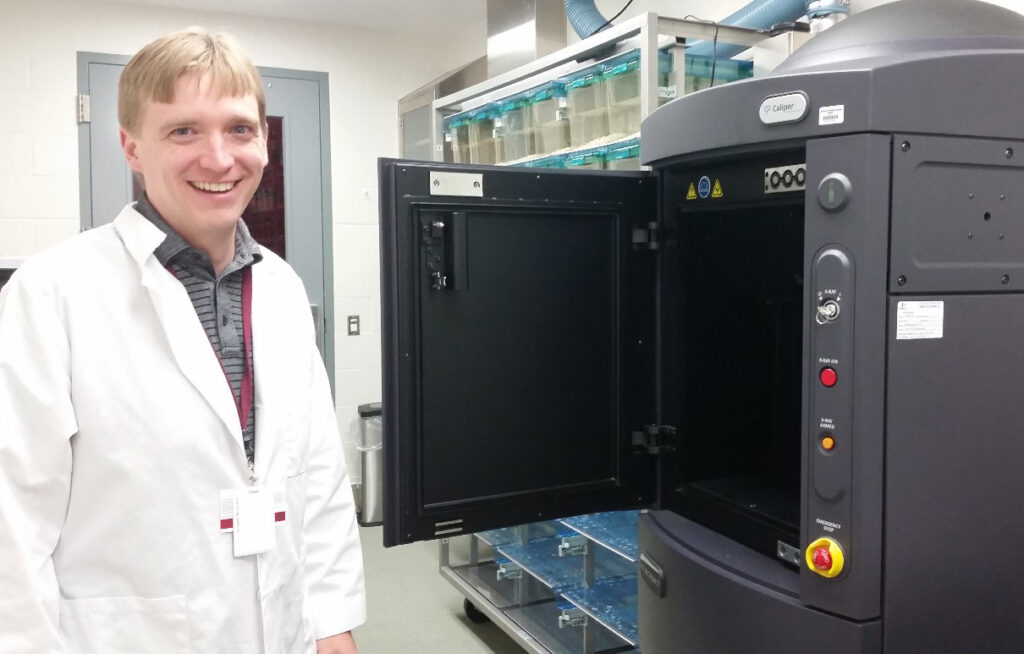
The global in vivo imaging systems market is experiencing substantial growth, with a valuation of USD 114.66 million in 2022 and a projected Compound Annual Growth Rate (CAGR) of 3.2% that is expected to drive the market to USD 154.83 million by 2032. This optimistic outlook is highlighted in a recent comprehensive market analysis, reflecting an increasing demand for advanced imaging technologies and a rising focus on molecular imaging techniques.
The surge in market potential is largely attributed to the rapid advancements in molecular imaging technologies, which are transforming the landscape of in vivo imaging systems. These innovations are instrumental in enhancing the precision and efficacy of medical imaging, paving the way for more accurate diagnostics and improved patient outcomes.
Push Your Business to the Forefront with the Aid of Our Comprehensive In Vivo Imaging Systems Market Sample Report
“As healthcare services and technologies continue to evolve, and the demand for non-invasive small-animal imaging techniques rises, we foresee a significant uptick in the adoption of in vivo imaging systems,” remarked FMI. “Moreover, heightened awareness regarding the benefits of early disease detection and the increasing acceptance of multi-modality imaging systems in clinical settings are driving factors contributing to market growth.”
In vivo imaging systems, characterized by their ability to provide visual representations of biological processes within living organisms, are crucial for studying cellular activity and the effects of drugs across various diseases. These systems encompass both morphological and molecular imaging modalities, catering to diverse research and diagnostic needs.
Morphological imaging systems such as high-frequency micro-ultrasound, computed tomography (CT) scans, and magnetic resonance imaging (MRI) offer invaluable insights into anatomical structures. Meanwhile, molecular imaging systems including fluorescence, bioluminescence, single photon emission computed tomography (SPECT), and positron emission tomography (PET) enable the visualization of molecular interactions and pathways within biological systems.
Small animal in vivo imaging plays a pivotal role in preclinical research, facilitating the evaluation of drug efficacy and disease progression in models such as albino mice and rats. This segment encompasses a range of imaging techniques, from full-body scans to targeted molecular imaging, driving advancements in drug development and validation processes.
Similarly, human in vivo imaging systems serve as indispensable tools for diagnosing and monitoring various diseases and conditions, utilizing modalities such as CT scans, PET scans, SPECT scans, and MRI scans.
As we look towards the future, continued innovation in imaging technologies, coupled with strategic collaborations and investments, will play a crucial role in shaping the trajectory of the global in vivo imaging systems market.
In vivo Imaging Systems Market: Drivers and Restraints:
Drivers:
- Increasing government funding for research: More government grants and initiatives focused on healthcare and life sciences can accelerate the adoption of advanced imaging systems.
- Growing geriatric population: As the elderly population grows, the demand for early disease detection and treatment increases, driving the use of in vivo imaging.
- Artificial intelligence (AI) integration: AI-powered image analysis can improve accuracy, efficiency, and workflow in in vivo imaging, making it more attractive to healthcare providers.
Restraints:
- Stringent regulatory requirements: Strict regulations regarding safety and data privacy can slow down the approval process for new imaging technologies.
- Limited availability of skilled personnel: Operating and interpreting complex imaging systems requires specialized training, and a shortage of skilled professionals can hinder market growth.
- Data security concerns: The increasing amount of sensitive patient data generated by in vivo imaging raises concerns about data breaches and cyberattacks.
By considering these additional factors, you can paint a more comprehensive picture of the forces shaping the in vivo imaging systems market.
Gain Essential Insights Get the Complete Report
In vivo Imaging Systems Market: Key Players
The key players in the in vivo imaging system market include Bruker Corporation, Life Technologies Corporation, Miltenyi Viotech GmbH, Biosacan, Inc., Gamma Meddica, Targeson, Inc., Sanco Medical, Aspect Imaging, Mediso Medical Imaging Systems, Perkin Elmer, Inc., FUJIFILM Holdings Corporation and Siemens AG.
In vivo Imaging Systems Market: Segmentation
Based on application, the In vivo Imaging Systems Market is segmented into the following:
- Monitoring Drug Treatment Response
- Bio Distribution Studies
- Cancer Cell Detection
- Biomarkers
- Longitudinal Studies
- Epigenetics
Based on technology, In vivo Imaging Systems Market is segmented into the following:
- Magnetic Resonance Imaging (MRI)
- Digital Angiography
- Ultrasound
- Nuclear Imaging
- Positron Emission Tomography (PET)
- Single Photon Emission Computerized Tomography (SPECT)
- Optical Imaging (OI)
- Bioluminescence Imaging
- Cerenkov Luminescence Imaging
- Others
- Ultrasound Imaging
- Computerized Tomography (CT)
Based on end user, the in vivo imaging systems market can be segmented into following:
- Hospitals
- Clinics
- Pharmaceutical Research Institutes
- Diagnostic Laboratories
- Forensic Laboratories
- Educational research institutes
Based on geography, the in vivo Imaging Systems market is segmented into following:
- North America (U.S., Canada)
- Latin America (Mexico, Brazil)
- Western Europe (Germany, Italy, U.K, Spain, France, Rest of Western Europe)
- Eastern Europe (Russia)
- Asia Pacific (China, India, ASEAN, Australia & New Zealand)
- Japan
- Middle East and Africa (GCC, S. Africa)
About Future Market Insights (FMI)
Future Market Insights, Inc. (ESOMAR certified, recipient of the Stevie Award, and a member of the Greater New York Chamber of Commerce) offers profound insights into the driving factors that are boosting demand in the market. FMI stands as the leading global provider of market intelligence, advisory services, consulting, and events for the Packaging, Food and Beverage, Consumer Technology, Healthcare, Industrial, and Chemicals markets. With a vast team of over 400 analysts worldwide, FMI provides global, regional, and local expertise on diverse domains and industry trends across more than 110 countries.
Contact Us:
Future Market Insights Inc.
Christiana Corporate, 200 Continental Drive,
Suite 401, Newark, Delaware – 19713, USA
T: +1-845-579-5705
For Sales Enquiries: sales@futuremarketinsights.com
Website: https://www.futuremarketinsights.com
LinkedIn| Twitter| Blogs | YouTube

